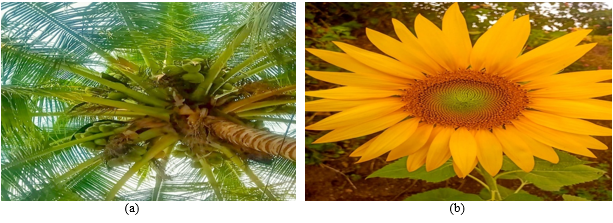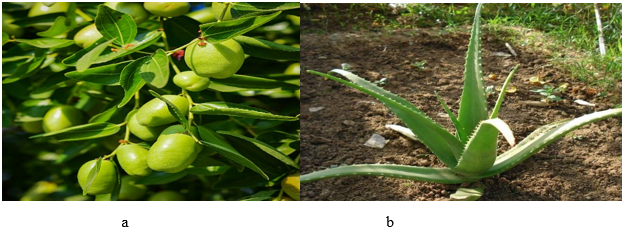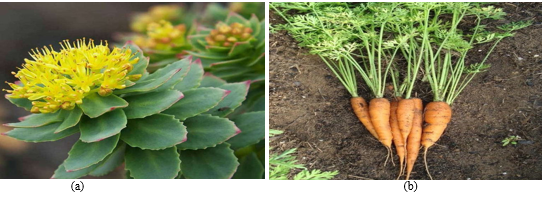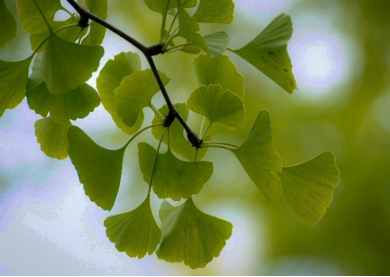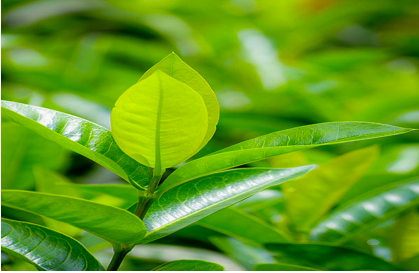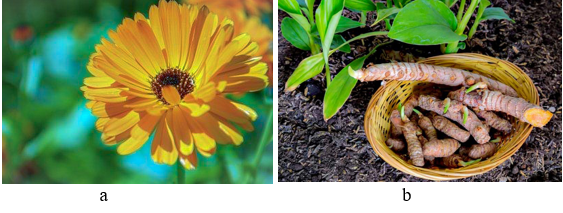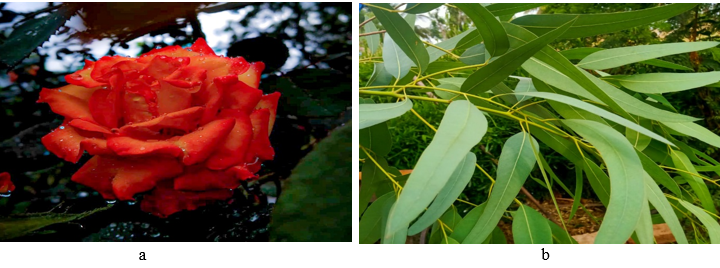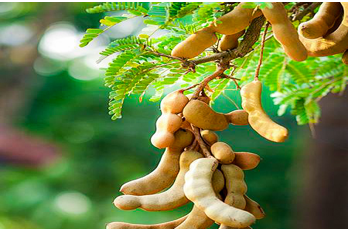Introduction
Cosmetics are items designed to be applied to the skin of the body in order to cleanse, enhance attractive traits, or change look.1 There were no fairness creams or cosmetic operations available in ancient times, thus men’s ability to charm others with their beauty was their secret weapon. Individuals’ skin and hair beauty are influenced by their health, lifestyle, regular jobs, climatic conditions, and upkeep.2 Any substance or preparation intended to be rubbed, poured, sprinkled, sprayed, introduced into, or applied to any part of the human body for cleaning, perfuming, beautifying, promoting, attractiveness, or altering the appearance is prohibited under the Drug and Cosmetic Act of 1940, which also includes any substance intended for use as a cosmetic component. For better results, natural herb ingredients are increasingly being included in personal and health care products. Recent studies demonstrate that herbs are more potent but also benign and calming.3
Cosmetics are developed to reduce wrinkles, fight acne and to control oil secretion. For various types of skin ailments formulations like skin protective, sunscreen, anti-acne, anti-wrinkle and anti-aging are designed using varieties of materials, either natural or synthetic. The skin and hair beauty of individuals depends on the health, habits, routine job, climatic conditions and maintenance.4 Cosmeceuticals are cosmetic-pharmaceutical hybrids intended to enhance health and beauty through Ingredients that influence the skin’s biological texture and function.
Cosmeceuticals
The term Cosmeceuticals was first used by Raymond Reed founding member of US Society of cosmetics chemist in 1961. He actually used the word to brief the active and science based cosmetics. The above term was further used by Dr. Albert Kligman in the year 1984 to refer the substances that have both cosmetic and therapeutic benefits.5 Cosmeceuticals are cosmetic pharmaceutical hybrids intended to enhance health and beauty through ingredients that influence the skin’s biological texture and function.6 Cosmeceuticals are cosmetic-pharmaceutical hybrids intended to enhance health and beauty through ingredients that influence the skin’s biological texture and function.7
Herbalism: According to the World Health Organization (WHO), Herbalism is the use of crude plant material such as leaves, flowers, fruit, seed, stems, wood, bark, roots, rhizomes or other plant parts, which may be entire, fragmented or powdered. The term herbalism refers to the long historical use of these medicines to support the healing function of the body. Because of the long tradition of using botanicals to promote health, the use of herbs is wel aloel established and widely acknowledged to be safe and effective.
Natural products: Herbal cosmetics are natural and do not contain all the harmful synthetic chemicals that can often be harmful to the skin.
Safe to use: Use of natural cosmetics is secure. Dermatologists evaluated them and found that they were hypoallergenic and safe to use anytime, anywhere. People do not need to be concerned about developing a rash or sensing one because the product is made with natural chemicals.
Compatible with all skin types: No matter what colour your skin is, whether you’re dark or light, you may discover natural makeup like foundation, eye shadow, and lipstick that works for you. They can be used by women with sensitive or oily skin without worrying about worsening their skin’s state.
Advantages of Herbal Cosmetic on Traditional Cosmeceutics 8
They have no adverse side effects and don’t cause allergic reactions.
They blend very well with skin and hair.
These cosmetics work far better than other small-quantity cosmetics.
Plant extracts reduce the bulk qualities of cosmetics and provide the necessary pharmacological effects.
Simple to find and present in a wide range of plants.
Their herbal ingredients are more stable, pure, and effective.
Simple to produce.
Herbal cosmetics are easy to handle and store for a longer amount of time.
Low-priced
Plants used in skin cosmetics and toiletries as cosmeceuticals9
Table 1
Herbs Used in Cosmetics/Cosmeceuticals
Numerous herbs are naturally occurring and have a wide range of applications in cosmetic preparations for skin care, hair care, antioxidants, fragrance, etc. The following are some crucial examples:
Skincare
Olive oil: A fixed oil called olive oil is made from the fruits of the olea europaea plant in the oleaceae family. Tripalmitin, tristearate, monosterate, squalene, -sitosterol, and tocopherol are the main components. Lotions and shampoos made with it are used on the skin and hair. Additionally, it worked in industry.
Coconut oil: The dried kernel of copra, which contains 60–65% oil, is crushed to create it. Lower chain fatty acid glycerides are abundant in coconut oil. Coconut oil is made from the fruit or seed of the Arecaceae-family coconut palm tree Cocos nucifera. Since coconut oil is easily usable in liquid or solid form and has a melting point of 24 to 25°C (75-76oF), it is frequently used in baking and cooking. Coconut oil does wonders to soften and moisturise the skin 10.
Sunflower oil: It is the non-volatile oil extracted from the seeds of Helianthus annuus, a member of the Asteraceae family. Lecithin, tocopherols, carotenoids, and waxes are all present in sunflower oil. It is non-comedogenic and provides smoothing effects in cosmetics. Simple but affordable oil that has stood the test of time in a variety of emulsions designed for face and body items.11
Jojoba Oil: It is a blend of long-chain, linear liquid wax esters that were taken from the seeds of Simmondsia chinensis, a desert shrub in the simmondsiaceae family. Jojoba oil is frequently used in cosmetics as a moisturizer and as a carrier oil for exotic perfumes because it is simple to refine to remove any aroma, colour, and oxidative instability. Jojoba oil and human sebum are nearly equivalent. The skin and hair are moisturized and protected by sebum.11 The seed of this desert shrub, which is the size of a peanut, is cold-pressed to produce jojoba oil. When the seeds are expressed, they produce roughly 50% of the liquid wax known as jojoba oil, which is a rich extract used in cosmetic treatments. This wax also forms a protective film over the skin that seals in moisture (Dweck, 1997d) in addition to acting as a humecant.
Aloe Vera: Aloevera is a kind of medicinal plant in the liliaceae family; it only grows in cultivation and has no wild populations, however closely related aloes are present in northern Africa. Aloevera includes antioxidant-active vitamins A, C, E, B, choline, folic acid, and amino acids like leucine and isoleucine. It also has saponin glycosides that have a cleaning effect.12 Aloe Vera is the only moisturizers that won’t leave a greasy film on your face. Without blocking pores, it softens the skin. Aloe vera gel can also be applied to the skin after shaving because it hydrates the skin and aids in the recovery of razor burn and minor cuts. Aloe Vera extract is a beneficial element in cosmetic formulations and as a treatment for dry skin, according to research that demonstrates its ability to improve skin moisture.
Anti-Aging Treatment
Rhodiola rosea: It is sometimes referred to as roseroot and golden root. It is a species of plant from the Crassulaceae family that lives in frigid climates. Traditional folk medicine employed R. Rosea to promote physical endurance, work productivity, lifespan, resistance to high altitude sickness, and to alleviate exhaustion, depression, and anaemia. It primarily grows in dry sandy terrain at high altitudes in the northern regions of Europe and Asia.13 The Rhodiola root has long been used in the traditional medical systems in Europe and Asia to increase an organism’s resistance to physicalstress, currently; it is widely thought to have antioxidative properties to increase an organism’s resistance to physicalstress, currently; it is widely thought to have antioxidative properties.
Carrot: It is made from the plant Daucus carota, which is a member of the Apiaceae family. As a rich natural source of vitamin A and other vital vitamins, it has long been regarded as a useful herb. The benefits of carrot seed oil include anti-aging, revitalization, and renewal. Because it encourages the growth of new cells and aids in wrinkle reduction. It functions as a natural skin toner and rejuvenator.14 A renewing, anti-aging, and anti-aging substance is carrot seed oil. Carotenoids such as -carotene, as well as trace levels of -carotene and -carotene, give carrots their distinctive bright orange colour. B-carotene in humans partially metabolized into vitamin A.
Ginkgo: Ginkgo biloba (G. biloba) tree leaves and nuts have been used for thousands of years in China and Japan to treat a variety of illnesses, including impotence in men, poor blood circulation, hypertension, impaired memory, and depression in the elderly. Additionally, it is developing a comparable reputation as an anti-inflammatory and antioxidant substance.15 It also enjoys the same reputation as an anti-inflammatory and antioxidant. It has been demonstrated that G. bilobaextract EGb 761, a naturally occurring mixture including flavone glycosides (33%), particularly derivatives of quercetin and kaempferol, as well as terpenes (6%), reduces the quantity of ultraviolet B solar cells (UVB) in mice.
Dandruff Treatment
Henna: Henna is derived from the plant Lawsonia inermis, which belongs to the Lythraceae family. This plant contains the colour molecule Lawsone, which is processed to create henna powder. Gallic acid, glucose, mannitol, lipids, resin (2%), mucilage, and traces of an alkaloid are also present in addition to lawsone. Henatannic acid and an olive oil-green resin produced by the leaves are soluble in ether and alcohol.16 It is widely used as a colouring dye, and according to Indian culture, using it is a symbol of fortune during the holiday or wedding season. Henna is an ingredient in many hair care products since it dramatically increases hair pigmentation and masks signs of ageing.
Neem: A botanical relative of mahogany is neem or margosa. It is a member of the Meliaceae family. Azadirachta indica, the Latinized name of neem, is a translation from Persian.
Azad means "free," dirakht "tree," and i-Hind "of Indian Origin."
Neem is a popular remedy for dandruff since it makes substances that are antifungal, antibacterial, pain-relieving, and anti- that would treat dandruff.17 Neem-containing soap is used to treat minor skin infections or as a preventative measure against fungus. Neem is a main component in face washes that have anti-acne, anti-wrinkles, anti-ageing, and anti-microbial properties. Neem is also moisturizing and helps to lessen pimples.
Skin Protection
Green tea: It is tea prepared only from Camellia sinensis leaves, a member of the Theaceae family.18 Green tea leaves include (2)-epicatechin (EC), EGC, (2)-EC-3-gallate, and EGCG, the most prevalent of the four major polyphenolic catechins.19 Green tea is a top-notch skin protectant, whether administered topically or eaten as a beverage or dietary supplement. According to study from the Department of Dermatology at Columbia University, New York, it guards against direct cell injury and controls inflammation. According to studies, green tea’s catechins have about 20 times more antioxidant potency than vitamin E. To protect themselves from the sun’s harmful effects, men, women, and children must position this powerful shield on their side.
Calendula: According to reports, the herb calendula officinalis has exceptional antioxidant, anti-inflammatory, and wound-healing properties.20 According to a prior study, the primary constituents of the essential oil of calendula include -thujene, -pinene, 1,8-cineole, Dihydrotagetone, and T-murolol.21 Applying calendula tincture or solution topically to treat acne can reduce swelling, stop bleeding, and calm irritated skin. There is “limited evidence” that calendula cream or ointment can be used to treat radiation dermatitis. In a study comparing 4% calendula ointment to trolamine, only 254 radiation patients who received the 4% calendula treatment experienced more cases of Grade 2 or higher dermatitis.
Turmeric: Curcuma longa, a perennial herbaceous plant with essential oils, belongs to the ginger family Zingiberaceae. Hindus frequently utilize turmeric in their festivals. Brides would apply turmeric on their bodies, especially in Hindu weddings, to give them a bright appearance. Babies are also given turmeric to rub on their foreheads for luck. Turmeric has antibacterial properties that make it useful for treating minor skin wounds. It also has antioxidant properties that can help scavenge free radicals and slow the onset of ageing symptoms. Since turmeric is thought to improve complexity, it is a common ingredient in fairness products. When applied topically, turmeric’s anti-microbial qualities aid in the management of skin infections. It is traditionally used throughout the wedding season since regular application improves skin structure and tone. Predominant presence of turmeric
Hair Care
Amla: The plant Emblica Officinalis, which belongs to the Euphorbiaceae family, provides amla. Amla is abundant in vitamin C, tannins, and minerals like phosphorus, iron, and calcium, all of which nourish hair and contribute to hair darkening. Amla is used to cure issues with the scalp and hair. Additionally, it is used to treat children’s skin conditions and hair loss.
Shikakai: A medicinal plant known as Acacia concinna Linn. (Leguminosae) grows in Southern Asian tropical rainforests. The fruits of this plant are employed as a purgative, an expectorant, an emetic, and a means of cleaning hair.22 Additionally used to promote hair development, this plant’s saponin content makes it an excellent cleaning agent. There are many commercial shampoos on the market using Shikakai as their main ingredient for hair nourishment.
Essential oils
Due to the high demand for natural, unadulterated substances in many industries, essential oils are utilized widely throughout the world and are continuing to expand in popularity. As a result, a lot of essential oils are produced around the world to support the cosmetics, aromatherapy, phytomedicine, and fragrance and flavouring sectors.
Rose oil: Due in large part to the enormous variety of plant habitats and floral traits that roses exhibit, they are frequently referred to as the world’s favourite flower. Rose Damascena and Rosa centifolia, members of the Rosaceae family, provide the well-known essential oil known as rose oil, which is made from their petals. “Rose otto” refers to steam-distilled rose oil. Though “rose absolute” is the name of the product obtained during solvent extraction. It is utilized in perfumery more frequently. Rose oil promotes mental calmness and treats anxiety, grief, nervous tension, and melancholy. Furthermore, it promotes skin health and wound healing.
Eucalyptus Oil: The distilled oil from the leaves of the genus Eucalyptus, a member of the plant family Myrtaceae, is known as eucalyptus oil. Dandruff can be eliminated with eucalyptus oil, and this will help to encourage healthy hair growth.23 The oil of the Eucalyptus species plant is generated by steam distillation, and it is used to make toothpaste, liniments, and ointments as well as pharmaceutical flavours. It is an essential oil, thus toothpaste and dentifrices are the only products that use it for cosmetic purposes and because of its nice aroma.
Antioxidants
Tamarind: Tamarind, or Tamarindus indica L., is a member of the Fabaceae family and the Caesalpinioideae subfamily. Tamarind plant components are made up of minerals, fatty acids, and amino acids. The tartaric acid in tamarind gives it a sweet acidic flavour, which is its most distinctive feature. Tamarind fruit is a fantastic source of vitamin B and is also a great source of sugar.24, 25 Tamarind seeds have anti-microbial, lipid peroxidation-reducing, and radical-scavenging properties. For anti-wrinkle cosmetics, its antioxidant activity is suitable. B antimicrobial activity and decreasing lipid peroxidation. For anti-wrinkle cosmetics, its antioxidant activity is suitable.
Vitamin C: The hydroxylation of proline, procollagen, and lysine requires vitamin C. The effects of photodamage can be improved by vitamin C. Some of the effects of photo-aging on skin have been reduced by using vitamin C to induce collagen repair. Due of its ability to donate free radicals, it reduces free radical damage. It helps to strengthen the immune system. Carrots, peaches, sweet potatoes, oranges, broccoli, etc. are the main sources of vitamin C.
Vitamin E: The main lipophilic antioxidant in plasma membranes and tissues is (Alpha-tocopherol). The word “vitamin E” refers to a group of 30 naturally occurring compounds that all have vitamin E action (4 tocopherols and 4 tocotrienols).26 Animals and plants are both sources of vitamin E. It has been discovered to be helpful in treating some forms of cancer and heart issues. The term “scavenger of free Radicals” describes it. The main sources of vitamin E are nuts, whole grains, almonds, vegetable oils, etc.
Extraction Methods
Extraction is the methodical and selective extraction of a plant’s medicinally effective parts. It is the most important first stage in the analysis of medicinal plants since it is necessary to separate and characterize the desired chemical components from the plant materials.27 Natural product extraction has also adopted the use of contemporary extraction techniques, which have advantages including reduced consumption of organic solvents, shortened extraction times, and increased extraction yield.28
Ultrasonic Extraction: In this method, high frequency sound is used to release natural chemicals from plant tissues while damaging the cell wall. Immiscible solvent mixes, like hexane with methanol/water, can be employed with ultrasound-assisted extraction. Heat is produced during the process, allowing heat-labile chemicals to break down.29
Microwave Assisted Extraction (MAE): The process is known as microwave extraction and combines microwave technology with conventional solvent extraction. Microwave assisted organic syntheses (MAOS), which enable the rapid assembly of tiny molecules into massive polymers, have sparked a revolution in the synthesis of organic compounds. 30 Analytes can more easily be partitioned from the sample matrix into the solvent by heating the solvents and plant tissue with microwave energy. 31
Steam distillation: This is the common method used to separate volatile oils from raw plant material. Simple vaporization is accomplished using steam distillation, which involves running steam through the substance. Here, the volatile essential oil from the stem is extracted through condensation, in which oil and water separate. 32
Hydro Distillation: This method is frequently used to separate essential oils. A heating mantle is used to boil the plant material after it has been soaked in water. The essential oil is released from the oil glands in the plant tissues under the action of hot water, and it travels with the steam. 33
Reflux: The substance is treated with a boiling solvent during this heated extraction process. A condenser attached to the container’s top, preferably a round-bottomed flask, recycles the solvent vapour. The extraction of thermolabile natural materials is not possible. 34
Percolation: In order to prepare tinctures and fluid extracts, percolation is the method most usually utilized to extract active components. A percolation tube with cotton plugs or a filter and a stopcock is used to collect the plant material.35, 36
Conclusion
Over 70% of the population in India uses herbal cosmetics for personal care. The need for herbal cosmetics has increased in the personal care industry nowadays, and they are widely used in daily life. The appearance of the human body depends on having strong teeth, glossy hair, and radiant skin.37 The greatest way to lessen skin issues including hyperpigmentation, wrinkles, ageing, and rough skin texture is to use cosmetic items. The market for herbal cosmetics is growing quickly. The benefits of using herbal cosmetics include lower costs, a lack of adverse effects, environmental friendliness, safety, etc.38 The identification of plants and substances for skin care and treatment may result from further in-depth ethnobotanicals and ethanopharmacological research.39 The separation of natural products from plant extracts is a significant barrier for the identification and characterization processes since they typically contain multiple component mixes with variable polarity. Separation and characterization of various natural compounds depend heavily on extraction. The sector of herbal cosmetics will increase significantly and significantly with the management of these plants and the suspension.

